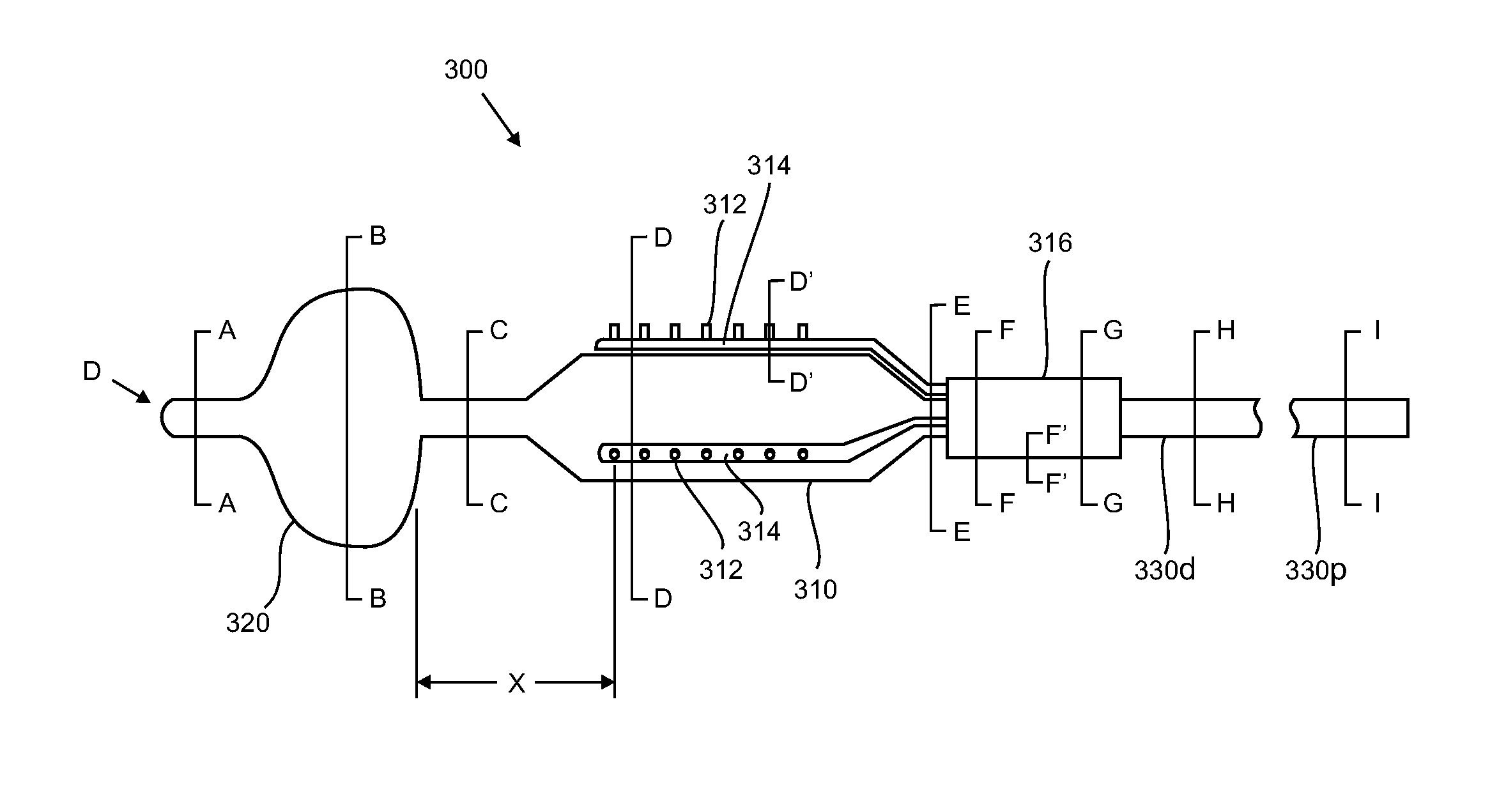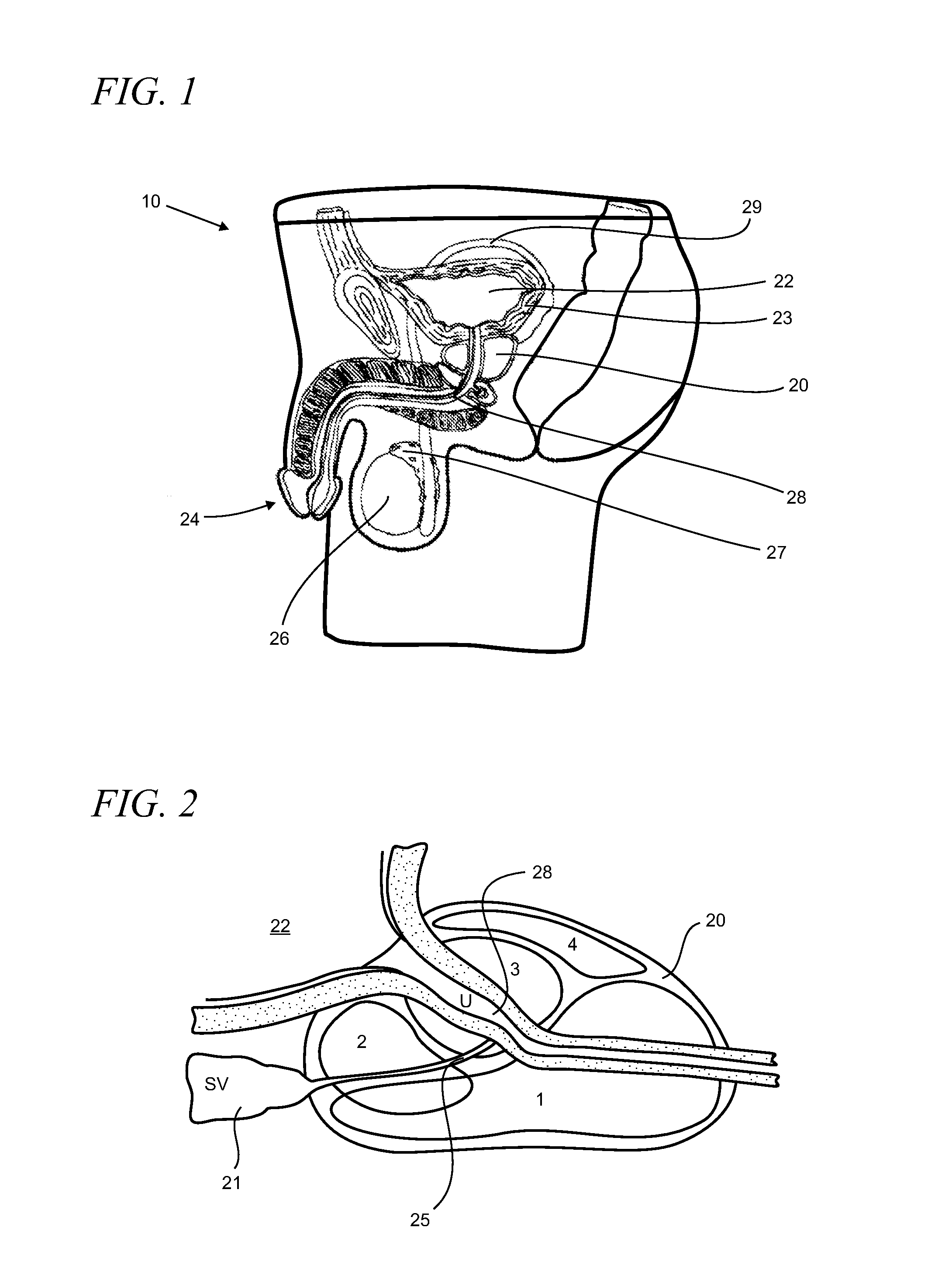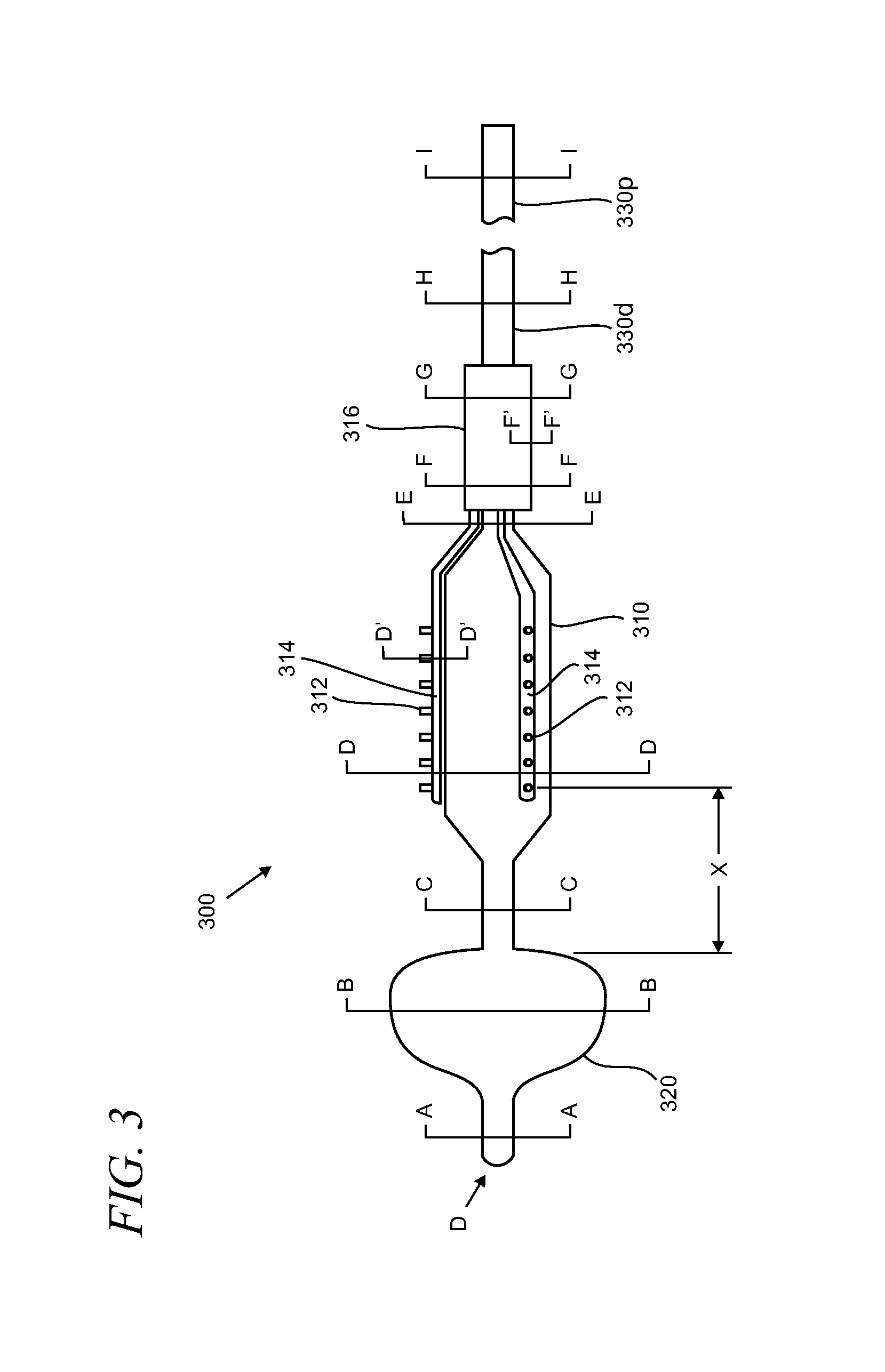Methods and devices for delivering therapeutic agents into the prostate gland
a prostate gland and therapeutic agent technology, applied in the field of prostate gland therapeutic agent delivery methods and devices, can solve the problems of increasing frequency and urgency, affecting the quality of life, and inability to urinate completely,
- Summary
- Abstract
- Description
- Claims
- Application Information
AI Technical Summary
Benefits of technology
Problems solved by technology
Method used
Image
Examples
example 1
[0127]Dogs are subjected to anesthesia and are immobilized in supine position on a radiological table. A lubricated pediatric nasogastric tube (NGT) or a lubricated human ureter catheter (UC) is then inserted into the bladder through the penis. The bladder is visualized by injecting 10 ml of diluted contrast media under fluoroscopic control through the tube / catheter. A 0.014″ coronary guide wire is then inserted forming a generous loop within the bladder. The UC is more suitable than the NGT for this purpose because of its opening at the end. The UC / NGT is then removed, keeping the guide wire in place. The opacified bladder serves as an anatomical guidance for localizing the prostate. The bladder neck, the sphincter, the intraprostatic as well as the distal segments of the urethra are identified by the anterograde flow of the contrast media along the guide wire. Catheters, either 7 or 8 mm diameter×15 mm long ((Boston Scientific / IVT (Interventional Technologies), San Diego, Calif., ...
example 2
[0137]1 ml of 5 mCi 99mTc complexed with hexamethyl-propyleneamine oxime (99mTc HM-PAO) (Ceretec®; Amersham Health, Arlington Heights, Ill., USA) is injected locally into the prostate tissue of elderly dogs (>6-year old) with proven prostatic hyperplasia, as described in Example 1 above.
[0138]The animals are euthanized after 4 days, and the prostates harvested from a suprapubic incision A paraffin embedded, haematoxylin and eosin (H&E) stained section of one dog is illustrated in FIG. 16. The glands seen in the photograph are almost completely destroyed. Although the shrunken contours of the glands are recognizable, the lining glandular cells are missing or are shredded into the lumen (e.g., see the glands in the middle of the photograph). The stroma is infiltrated with inflammatory cells.
PUM
 Login to View More
Login to View More Abstract
Description
Claims
Application Information
 Login to View More
Login to View More - R&D
- Intellectual Property
- Life Sciences
- Materials
- Tech Scout
- Unparalleled Data Quality
- Higher Quality Content
- 60% Fewer Hallucinations
Browse by: Latest US Patents, China's latest patents, Technical Efficacy Thesaurus, Application Domain, Technology Topic, Popular Technical Reports.
© 2025 PatSnap. All rights reserved.Legal|Privacy policy|Modern Slavery Act Transparency Statement|Sitemap|About US| Contact US: help@patsnap.com



